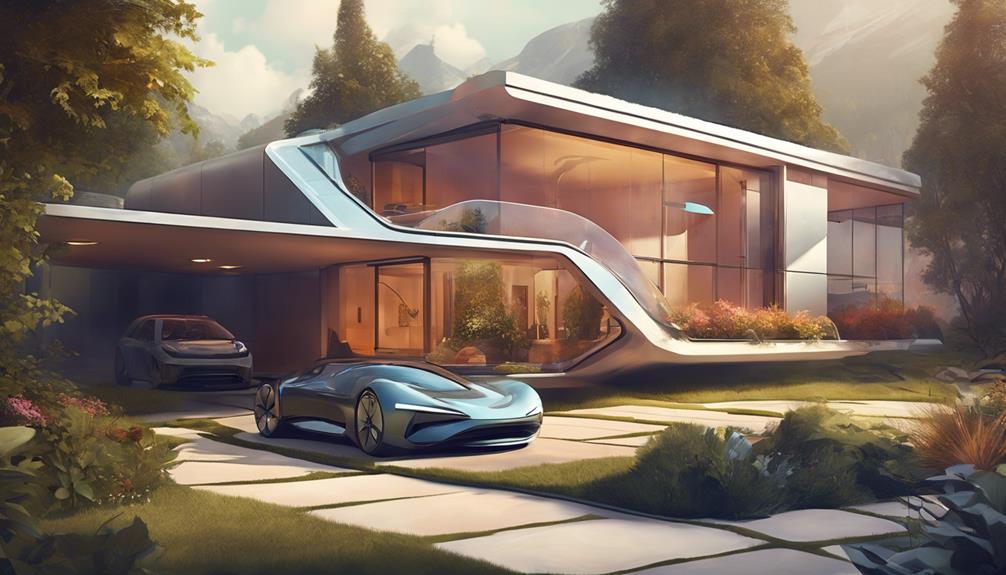In contemplating the future landscape of residential dwellings, it becomes evident that a convergence of cutting-edge technologies and sustainable practices will redefine the very essence of what we perceive as 'home'. The integration of AI, VR/AR, robotics, and IoT systems promises a paradigm shift in how we interact with our living spaces. However, beyond the realm of high-tech wizardry lies a deeper exploration into the fundamental essence of human-centric design and eco-conscious living. What lies ahead is not merely a transformation of physical structures but a reimagining of the very concept of 'home' itself, reflecting the evolving needs and aspirations of a society on the brink of a new era.
Key Takeaways
- Homes in the future will feature advanced smart home automation for security, entertainment, energy efficiency, and convenience.
- Virtual and augmented reality will enhance sensory experiences, entertainment, education, and customization in residential spaces.
- Biophilic elements and sustainable practices will promote well-being, sustainability, and a connection with nature in future homes.
- Wellness amenities and health-centric designs will prioritize inhabitants' health, encourage healthy lifestyles, and reduce stress for overall well-being.
Smart Home Automation Evolution
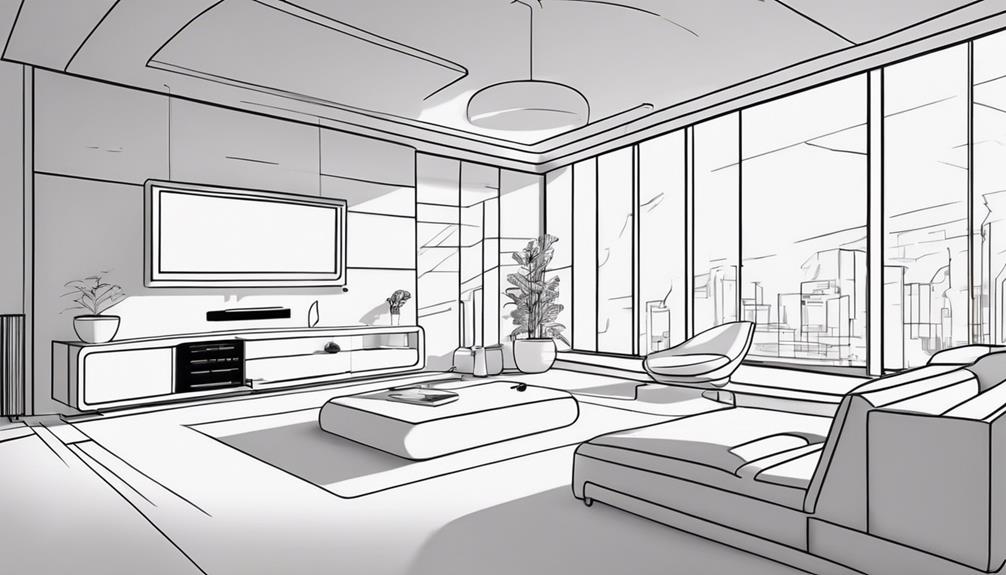
Smart home automation is advancing rapidly, adapting to residents' habits to provide personalized convenience and efficiency. With the integration of facial recognition technology, homes will offer enhanced security measures, allowing only authorized individuals access. Moreover, personalized entertainment systems will revolutionize leisure activities within households, tailoring content to individual preferences. Voice commands and Internet of Things (IoT) devices will play a pivotal role in enabling seamless control over various home functions, enhancing user experience and comfort.
These advancements in smart home automation will not only cater to residents' preferences but also optimize energy consumption, lighting, temperature, and even grocery ordering based on user patterns. The utilization of data analytics and machine learning algorithms will continuously refine these systems to better anticipate and serve residents' needs. As technology progresses, smart homes will become more intuitive and responsive, creating a truly interconnected and automated living environment for occupants.
Shared Workspaces in Residences
In upcoming residential developments, integrated shared workspaces will provide residents with ergonomic amenities and technological solutions to optimize productivity for remote work. These shared workspaces will feature ergonomic furniture designed to support the physical well-being of individuals during extended work hours. Incorporating tech solutions such as high-speed internet and video conferencing capabilities, these spaces will enable seamless remote work activities. Moreover, the inclusion of social areas within these workspaces will foster networking events, encouraging collaboration, and enhancing community engagement among residents.
The flexibility of these shared workspaces will allow residents to adapt to changing work needs, transitioning between focused work and social interactions effortlessly. The design of these spaces will prioritize comfort and functionality, creating a conducive environment for creativity and concentration. By integrating social areas alongside ergonomic furniture and tech solutions, future shared workspaces in residences aim to cater to the holistic needs of individuals engaged in remote work, promoting a balanced and productive work-life environment.
Virtual and Augmented Reality Integration
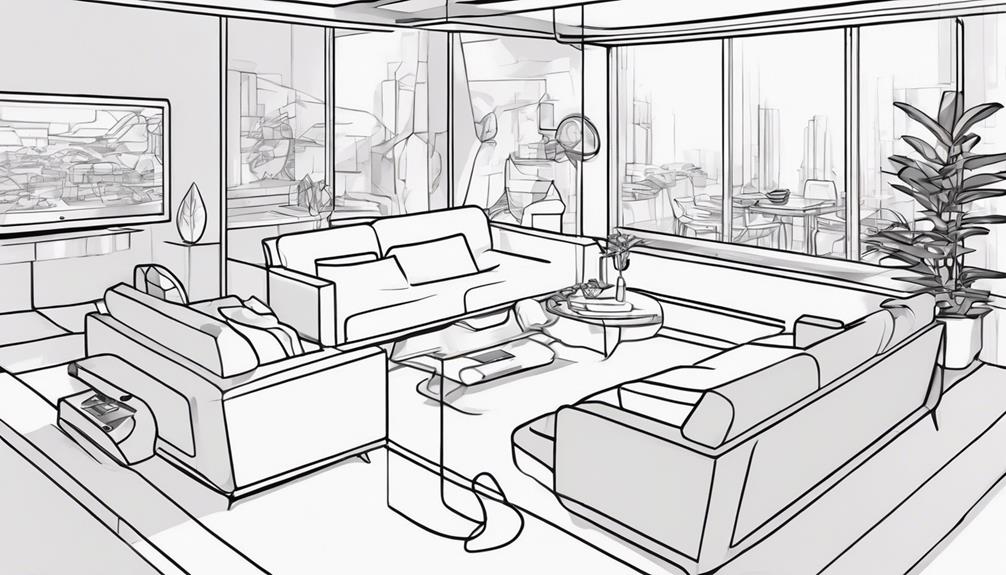
The integration of virtual and augmented reality technologies in future homes will revolutionize sensory experiences by creating immersive virtual environments. This advancement will allow residents to engage with digital content in a more interactive and personalized manner. By incorporating VR and AR into everyday activities, homes of the future will offer a new level of entertainment and educational opportunities.
Enhanced Sensory Experiences
Enhanced sensory experiences through integration of virtual and augmented reality technologies will revolutionize the way residents interact with their living spaces in future homes. These technologies will offer immersive experiences, dedicated spaces for VR/AR activities, and visualization tools for experimenting with furniture layouts. Residents will have the ability to create distraction-free environments and explore versatile decor options using floor-to-ceiling screens powered by VR/AR. This integration will not only enhance sensory experiences but also unlock new entertainment possibilities within homes. By incorporating smart VR/AR solutions, future homes will cater to a more engaging and interactive lifestyle, transforming the traditional concept of living spaces into dynamic, customizable environments that adapt to individual preferences and needs.
Immersive Virtual Environments
Immersive virtual environments in future homes, facilitated by the integration of virtual and augmented reality technologies, will redefine the way residents engage with their living spaces through transformative sensory experiences.
- Residents will have dedicated spaces for VR/AR activities, allowing for full immersion and interaction with the technology.
- Visualizing furniture and decor using VR/AR will enable informed design decisions, enhancing the aesthetic appeal of living spaces.
- VR/AR technology will create distraction-free environments within homes, promoting focus and relaxation for residents amidst the digital integration.
Integration of VR/AR in future homes will revolutionize how individuals perceive and interact with their domestic environments, seamlessly blending physical and digital realms to offer unparalleled experiences.
Robotics in Home Design
Robotics in home design presents a transformative approach by incorporating smart furniture integration and automated cleaning systems. These advancements aim to streamline household tasks and enhance overall living standards through the utilization of robotic technology. By facilitating efficient and intelligent automation, homes of the future are poised to offer unprecedented levels of convenience and functionality.
Smart Furniture Integration
The incorporation of robotic systems in furniture design is reshaping the landscape of modern homes by offering dynamic and adaptable living spaces. Smart furniture integration includes robotic systems that can adjust, move, or transform furniture based on user needs and preferences. Robotic furniture can optimize space usage in small homes or multifunctional rooms by adapting to different activities. These smart furniture solutions can be controlled remotely via apps or voice commands for convenience and ease of use. By integrating robotic systems, furniture can now enhance accessibility for individuals with mobility challenges by adjusting heights or positions as needed. This technological advancement in home design is revolutionizing interior layouts, providing dynamic and customizable living spaces.
Automated Cleaning Systems
The introduction of automated cleaning systems powered by robotics in modern homes is revolutionizing household maintenance practices with advanced technological capabilities. These AI-powered robotic cleaners are equipped with sensors that enable them to navigate through spaces efficiently, performing tasks such as vacuuming, mopping, and dusting without requiring human intervention. By recognizing obstacles, avoiding collisions, and mapping out optimal cleaning routes, these robotic cleaners streamline cleaning routines while saving time. Future homes will benefit from the integration of robotics in home design, as these systems adapt to different surfaces and adjust cleaning settings accordingly. The seamless incorporation of robotics and AI in cleaning processes signifies a significant advancement in enhancing the convenience and effectiveness of household chores.
Drone Technology for Security and Delivery
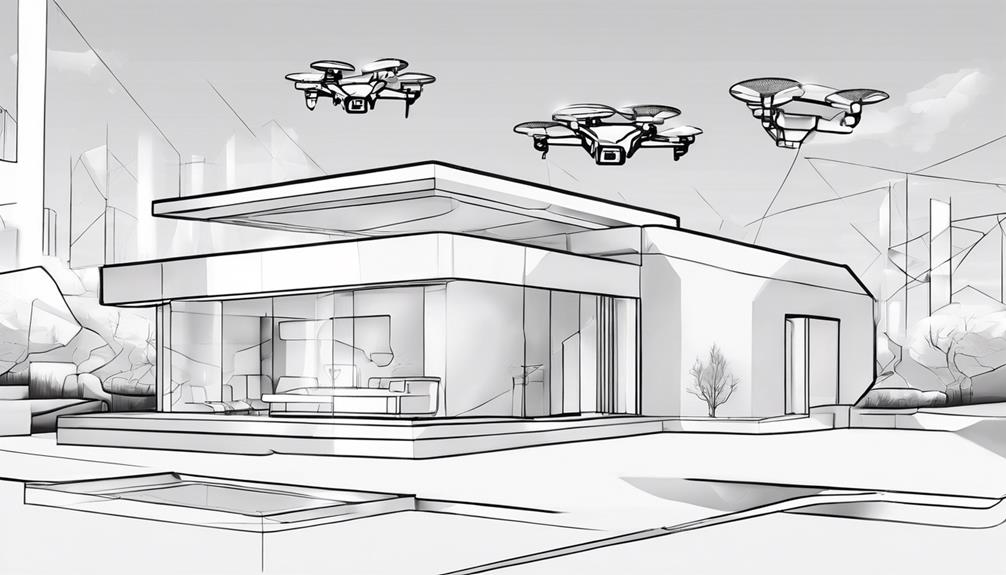
Utilizing advanced drone technology in residential settings offers homeowners enhanced security surveillance capabilities and efficient delivery services. Drones can provide real-time surveillance, patrolling property perimeters, and alerting residents to any suspicious activity. They enhance security measures by offering a proactive approach to monitoring, increasing overall safety. Additionally, drones are increasingly being used for package delivery, providing swift and reliable service to homeowners. These unmanned aerial vehicles can navigate obstacles with ease, ensuring timely delivery of items to specific locations within homes. Integration of drones into residential properties has the potential to revolutionize traditional security systems and streamline delivery processes, marking a significant advancement in home automation. Imagine drones hovering over your property, diligently monitoring for any signs of intrusion, while seamlessly delivering packages to your doorstep with precision and speed. This integration of drones in homes not only enhances convenience but also contributes to a heightened sense of security for homeowners.
Biophilic Elements in Home Interiors
Incorporating biophilic elements into home interiors enhances residents' well-being by fostering a connection with nature through the use of natural materials and features. Natural materials such as wood, stone, and plants are commonly integrated to bring the outdoors inside, promoting a sense of calm and tranquility. Indoor gardens and living green walls not only add visual appeal but also contribute to improved air quality within the living space. Biophilic design goes beyond aesthetics, incorporating water features, natural textures, and views of greenery to create a holistic living environment that supports health and wellness.
Research indicates that the presence of biophilic elements in home interiors can have significant benefits, including stress reduction, increased creativity, and enhanced overall satisfaction with living spaces. Moreover, these elements have been shown to boost productivity and mood among residents. By embracing biophilic design principles, homeowners can create spaces that not only look beautiful but also nurture a connection to nature, ultimately enhancing the quality of everyday life.
Net-Zero Energy Housing Solutions
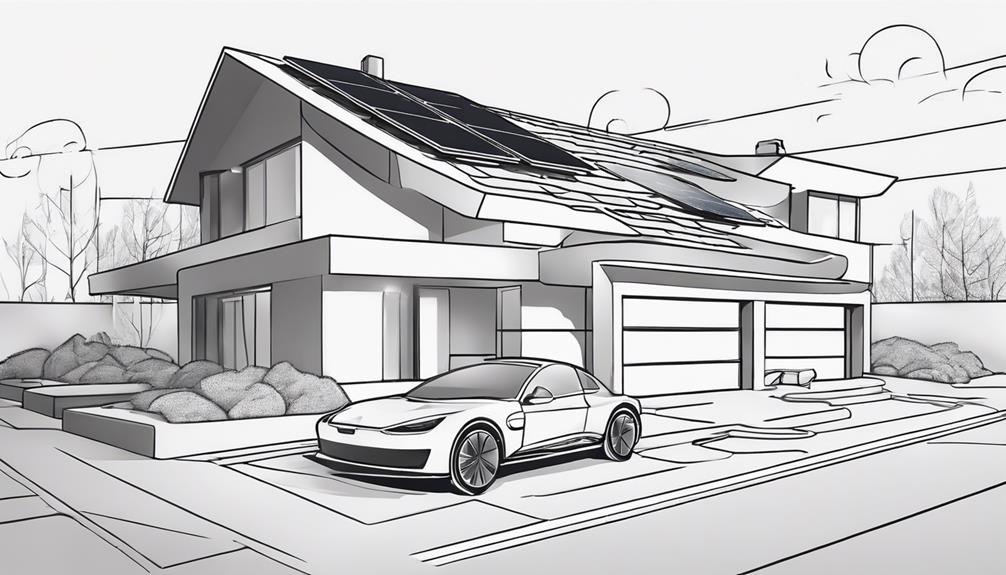
Net-zero energy housing solutions encompass the integration of solar panels to harness renewable energy, energy-efficient appliances to minimize electricity consumption, and smart home technology to optimize energy usage. By combining these key elements, net-zero energy homes strive to achieve a balance between energy generation and consumption, ultimately reducing carbon footprints and promoting sustainable living practices in the residential domain. Through a comprehensive approach that prioritizes energy efficiency and renewable sources, net-zero energy housing represents a promising direction for the future of environmentally conscious living.
Solar Panels Integration
Solar panels, integrated into residential structures, are revolutionizing energy consumption by striving to achieve a balance between energy generation and consumption, ultimately aiming for self-sufficiency.
- Harnessing sunlight to convert into electricity, reducing reliance on traditional energy sources.
- Promoting sustainability and combating climate change by reducing greenhouse gas emissions.
- Homeowners can benefit from government incentives and advancements in technology, making solar panels a cost-effective and efficient investment for achieving net-zero energy consumption.
Energy-Efficient Appliances
Energy-efficient appliances are integral components of net-zero energy housing solutions, significantly reducing energy consumption and promoting sustainability through their innovative design and functionality. These appliances are designed to minimize energy wastage, enhancing the overall energy efficiency of the home. By incorporating smart technology integration, energy-efficient appliances allow for better energy management and optimization within the household. Energy Star rated appliances, commonly found in net-zero energy homes, help meet sustainability goals and reduce the carbon footprint of the property. The use of such appliances not only lowers electricity bills but also plays a crucial role in lessening the environmental impact of residential properties committed to achieving net-zero energy status.
Smart Home Technology
With the increasing demand for sustainable living solutions, the incorporation of smart home technology has emerged as a pivotal aspect in the realm of energy-efficient housing developments. Smart home technology enables energy monitoring and optimization through connected devices and sensors. Integration of renewable energy sources like solar panels and wind turbines enhances the energy efficiency of smart homes. Energy-efficient appliances, LED lighting, and smart thermostats help reduce energy consumption in net-zero energy homes. Smart grid technology allows homes to communicate with utility companies for optimal energy usage and savings. Net-zero energy housing solutions aim to produce as much energy as they consume, contributing to sustainable living.
Internet of Things in Home Systems
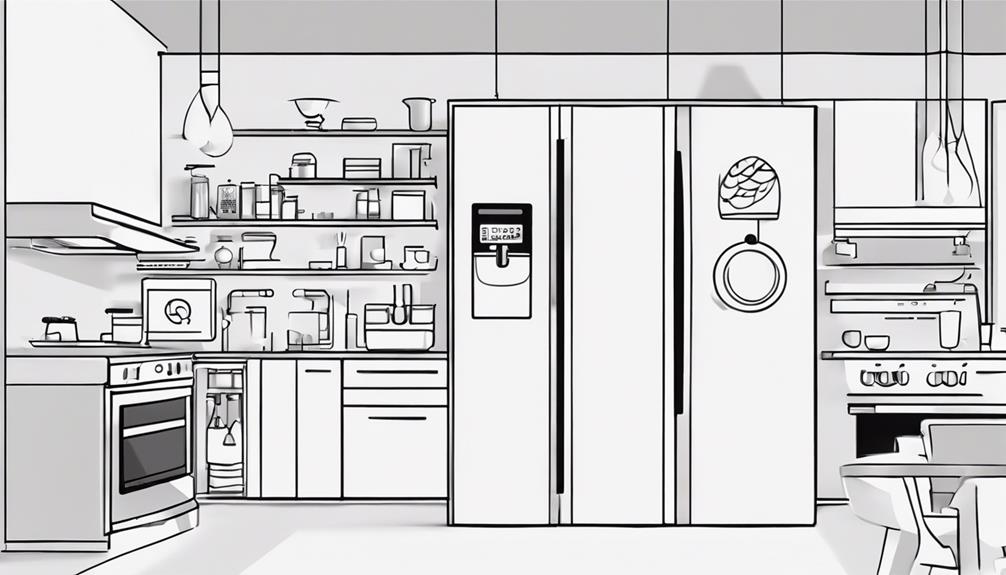
The integration of Internet of Things (IoT) technology in home systems revolutionizes how interconnected devices communicate and operate seamlessly for enhanced automation. IoT sensors play a pivotal role in enabling smart home technology, allowing for the monitoring of energy efficiency, detection of leaks, and optimization of various home functions. Through IoT integration, devices like smart thermostats, lighting systems, security cameras, and appliances can be remotely controlled, offering convenience and personalized features to homeowners.
Moreover, the incorporation of IoT technology enhances security measures within homes by enabling features such as smart locks and real-time surveillance systems. As the field of IoT continues to advance, the capabilities of interconnected devices are projected to expand, providing residents with even more personalized and interconnected features. The future of IoT in home systems holds great promise for creating efficient, secure, and convenient living environments through seamless automation and innovative technological advancements.
Virtual and Augmented Reality Applications
As homes evolve to embrace cutting-edge technologies for enhanced automation and security, the integration of virtual and augmented reality applications is poised to revolutionize the way residents interact with and experience their living spaces. Virtual reality (VR) and augmented reality (AR) will not only provide immersive entertainment experiences but will also serve practical purposes within homes of the future.
- Dedicated spaces within homes will be designed to accommodate VR/AR technologies, allowing residents to fully engage with these interactive systems.
- Homeowners will be able to visualize furniture and experiment with different layouts through VR and AR, enabling them to make informed decisions before making purchases.
- VR and AR applications will enhance the overall design and functionality of future homes, offering innovative ways to interact with technology and personalize home experiences.
The incorporation of VR and AR technologies will not only redefine entertainment within homes but also streamline various aspects of daily living through interactive technology.
Health-Centric Home Designs
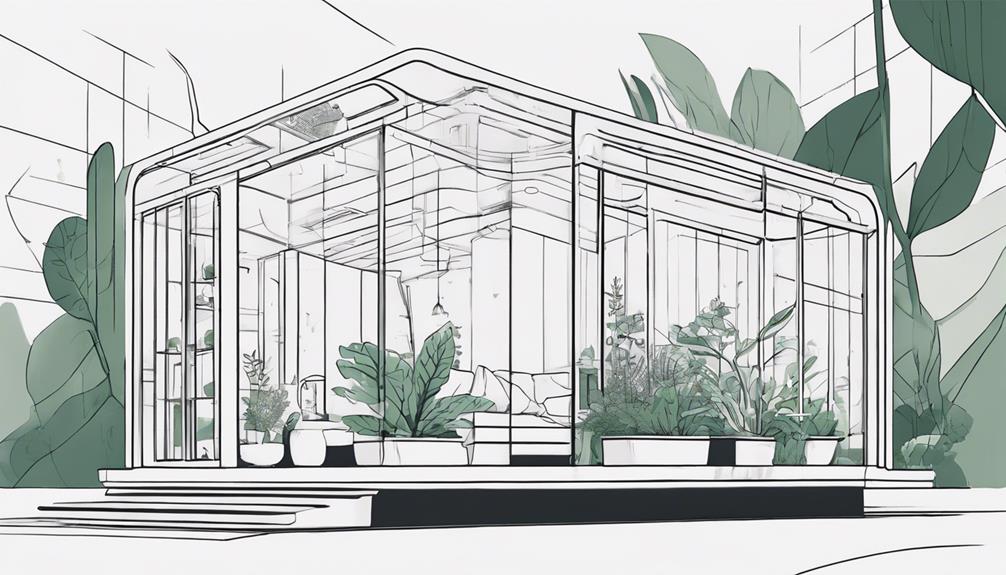
Innovative health-centric home designs prioritize natural lighting, air quality, and biophilic elements to enhance overall well-being. These designs aim to create a harmonious living environment that promotes physical, mental, and emotional health. By integrating elements like natural lighting, which can positively impact mood and regulate circadian rhythms, homes of the future will offer occupants a connection to the outdoors while indoors. Additionally, improved air quality through the incorporation of air purification systems will ensure a cleaner and healthier indoor atmosphere. The inclusion of green spaces within homes will not only enhance aesthetics but also provide opportunities for relaxation, stress reduction, and improved air quality.
Moreover, future homes will feature wellness amenities such as meditation rooms, gyms, and spaces for physical activity to encourage a healthy lifestyle. Ergonomic furniture and lighting solutions will support physical health and comfort during daily activities. By emphasizing the importance of holistic well-being, health-centric home designs represent a significant shift towards creating spaces that nurture the inhabitants' health and wellness.
Frequently Asked Questions
What Will the Future of Housing Look Like?
When considering the future of housing, smart technology integration, sustainable design practices, vertical living solutions, communal spaces, and modular construction techniques are crucial elements to explore. The amalgamation of these features can lead to enhanced living experiences, increased efficiency, and improved environmental impact. By embracing these advancements, future homes may offer a harmonious blend of technological innovation, eco-friendliness, space optimization, and community-oriented design to meet the evolving needs of occupants.
What a House of the Future Might Look Like?
When envisioning a house of the future, one can expect a seamless integration of smart technologies enhancing sustainability features. Modular design principles will facilitate adaptable spaces and promote vertical living for efficient land use. Communal spaces will foster a sense of interconnectedness. Through these advancements, future homes will be characterized by a harmonious blend of functionality, sustainability, and community-oriented living arrangements.
What Will House Be Like in 2050?
In 2050, homes will embody a fusion of smart technology, sustainable materials, vertical gardens, modular design, and energy efficiency. Smart technology will integrate seamlessly into every aspect of home management, enhancing convenience and resource optimization. Sustainable materials and vertical gardens will promote eco-friendly living, while modular design will cater to adaptability and versatility. Energy efficiency will be paramount, with homes designed to minimize environmental impact and maximize resource conservation.
What Will Homes Look Like in 20 Years?
In the next two decades, homes are expected to showcase a blend of smart technology, sustainable design, modular construction, compact living, and energy efficiency. This integration will cater to evolving societal needs, emphasizing environmental consciousness, flexibility in space utilization, and optimized energy consumption. Smart features will enhance convenience and connectivity, while sustainable materials and practices will promote eco-friendliness. These advancements aim to create efficient, adaptable, and comfortable living spaces for residents.
Conclusion
In conclusion, future homes will be a seamless blend of advanced technology and sustainable features, catering to residents' changing needs and preferences. The integration of smart home automation, shared workspaces, virtual and augmented reality, robotics, drone technology, net-zero energy solutions, and IoT systems will revolutionize the way we live. With a focus on adaptability, innovation, and energy efficiency, homes of the future will offer unparalleled comfort and convenience while promoting a healthier and more sustainable lifestyle.
